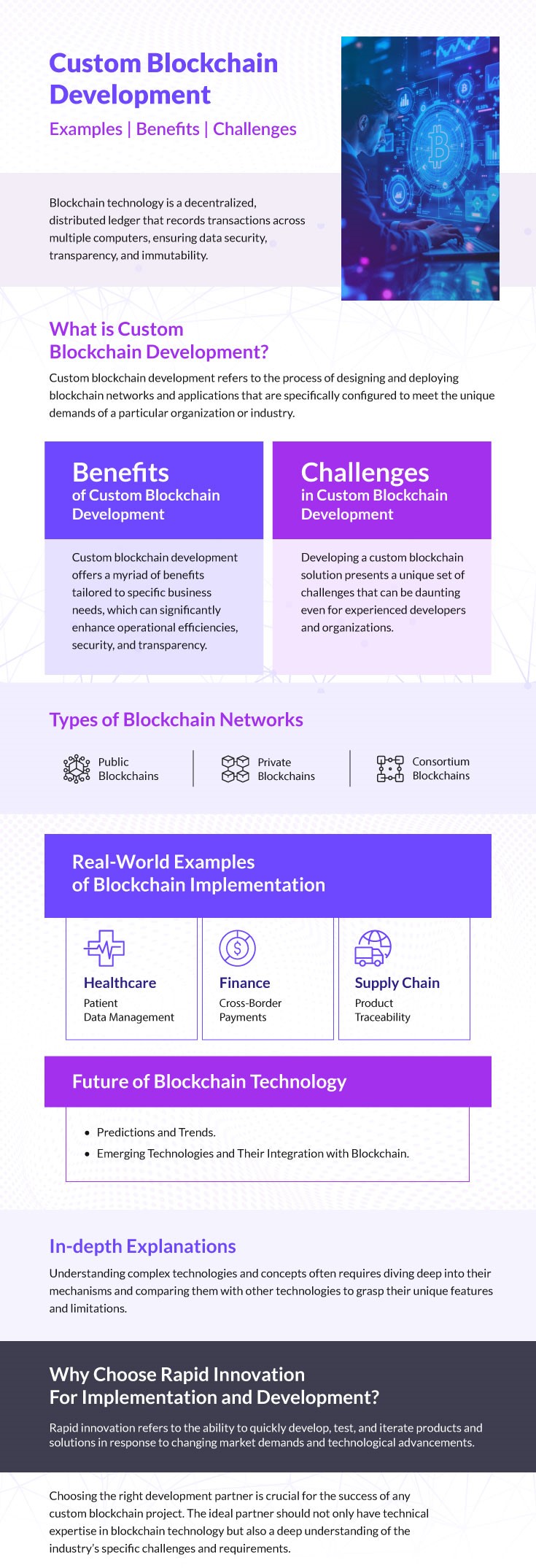 Social Media Content Packs – Stay Active Without Lifting a Finger!
Social Media Content Packs – Stay Active Without Lifting a Finger!
AWS DevOps: The Key to Scalable & Efficient Cloud Computing
Written by Lenny Steinman » Updated on: June 17th, 2025

The AWS DevOps is a set of practices and tools that work together by integrating software development and IT operations to enable faster development, deployment and management of applications on the Amazon Web Services (AWS) cloud platform. Essentially, it seeks to automate and streamline the software development lifecycle, making it easier to deliver high-quality software faster and without bugs.
AWS DevOps: Merging Development and Operations
AWS DevOps plays a crucial role in unifying traditionally siloed software development and IT operations, fostering a culture of shared responsibility and collaboration. This integration enables teams to provide services efficiently and reliably. By leveraging application performance monitoring, AWS DevOps helps maintain software quality and system stability throughout the development lifecycle.
Cloud Computing and DevOps on AWS
AWS DevOps heavily depends on cloud computing as it provides on-demand resources and scalable infrastructure to deploy and manage applications. AWS offers numerous services that help DevOps practices, including compute, storage, networking, and security. Companies can take advantage of these services to develop and deploy applications in a cost-effective, on-demand manner, with limited or no capital investment in hardware or software.
AWS DevOps helps organisations to leverage all the benefits of the scalability, elasticity, and reliability of the AWS cloud platform. AWS DevOps allows teams to provision and manage resources as needed, so they have the right capacity to meet their requirements. This can result in several benefits, including decreased costs, increased performance, and the assurance that applications are always active despite changing requirements.
Reiterating the point, AWS DevOps is a powerful software development approach that utilises the advantages of cloud computing to achieve faster, more reliable, and more efficient application updates. AWS DevOps helps teams collaborate more efficiently, optimise the software development lifecycle and fully leverage the AWS cloud platform by integrating development and operations.
Overview of AWS DevOps Services and Tools
AWS CodePipeline
AWS CodePipeline is a fully managed continuous integration and delivery service (CI/CD) for fast and reliable application and infrastructure updates. You can use it to create customised pipelines that help manage the software delivery process, from changes in code to deployments to production. This allows you to automate your development process using AWS CodePipeline , keeping your code fresh and production-ready.
AWS CodeDeploy
AWS CodeDeploy is a deployment service that automates the deployment of applications to various compute services, like Amazon EC2, AWS Lambda, or on-premises servers. It simplifies the deployment process by managing rolling updates, blue-green deployments, and automatic rollback of failed deployments. This falls within the realm of AWS CodeDeploy, which can help you minimise the risk of errors during deployments and keep your applications running smoothly.
AWS CodeStar
AWS CodeStar is a fully managed service that simplifies setting up, developing, and deploying applications on AWS. It gives you a single pane to manage everything from code repositories, build pipelines, deployment environments and monitoring tools associated with your software development projects. AWS CodeStar enables you to create new projects quickly, collaborate with your team, and streamline your development workflow.
AWS CodeBuild
AWS CodeBuild is a fully managed build service that compiles your source code, runs tests, and produces software packages that are ready to be deployed. Its wide language, build, and framework support enable easy integration into your existing development environment. AWS CodeBuild is a fully managed build service that eliminates the need to provision, manage, and scale your own build servers. You stay focused on writing high-quality code, while AWS CodeBuild handles the rest.
AWS Lambda
Amazon Web Services (AWS) Lambda is a serverless compute service that runs your code in response to events. It scales your applications automatically so they always have the right amount of compute capacity when needed. Building applications that automatically respond to changes in demand . With AWS Lambda, you can build incredibly scalable applications with limited budgets, relying on the full AWS DevOps toolset.
AWS Cloud Development Kit (CDK)
AWS Cloud Development Kit (CDK) is an open-source software development framework that defines a cloud application using familiar programming languages such as TypeScript, Python, and Java to provide shared AWS infrastructure. This chapter helps you understand the concept of AWS CDK, where you can treat your infrastructure as cod, allowing you to automate the provisioning and management of AWS resources and streamline your development workflow.
AWS Elastic Compute Cloud (EC2)
It developed its Elastic Compute Cloud (EC2) to deliver scalable computing capacity in the cloud. You can run virtual machines (instances) on the AWS infrastructure with complete control over your computing resources. With AWS EC2 and other AWS DevOps tools, you can create highly available and scalable applications that automatically accommodate changes in demand.
Amazon S3
Amazon S3 (Simple Storage Service) is an object storage with industry-leading scalability, data availability, security, and performance. The service is ideal for applications requiring highly durable and available storage, allowing you to store and retrieve any amount of data anytime. The Amazon S3 will help you integrate S3 with the AWS DevOps workflow to store your secure application stash. Application artifacts include build artifacts, deployment packages, logs, etc.
AWS DevOps: Continuous Integration and Continuous Delivery (CI/CD) DevOps
Why CI/CD Matters in Software Development
Continuous Integration (CI) and Continuous Delivery (CD) are best practices in software development that allow teams to efficiently build, test, and deploy code changes quickly and reliably. CI/CD stands for continuous integration and continuous delivery (or continuous deployment), which refers to the practice of frequently integrating code changes into a shared repository and automatically deploying them to production environments. Through the use of CI/CD, teams can uncover integration errors as early as possible, mitigate the risk of deployments, and speed up the delivery of new functionality and bug fixes.
Deploying with AWS CodePipeline and AWS CodeDeploy
At AWS, we make it easy to create and configure continuous integration and continuous deployment (CI/CD) pipelines using services such as AWS CodePipeline or AWS CodeDeploy. Here is how these services can be leveraged to build an actual end-to-end CI/CD pipeline:
Source: When there’s a new code check-in in your source repository (GitHub, Bitbucket, or AWS CodeCommit), configure AWS CodePipeline to automatically execute your new pipeline.
Build stage – Compile your source code, run tests, and create deployment artifacts (e.g., Docker images, AWS Lambda packages, or Amazon S3 objects) using AWS CodeBuild.
Deployment Staging: Configure AWS CodeDeploy for automatic deployment of your application artifacts to the required compute services (Amazon EC2, AWS Lambda, or on-premises servers).
Monitoring and rollback: Monitor the health of your deployments using AWS monitoring tools (for example, Amazon CloudWatch, AWS X-Ray, or AWS CloudTrail), and configure AWS CodeDeploy to automatically roll back failed deployments.
Best Practices in AWS CI/CD Environment
Here are some best practices to consider for the success of your CI/CD pipeline in AWS:
This means working backwards from automating everything. Automate all stages of your software development lifecycle from code commits to production deployments, so that there is minimal human intervention and lower the chances of errors
Leverage Infrastructure as code: Use AWS Cloud Development Kit (CDK) or AWS CloudFormation to manage your AWS infrastructure as code for consistent and repeatable deployments across environments
Create branches and merge: Create a common branching and merging strategy (e.g. GitFlow or trunk-based development) to streamline code integration and avoid merge conflicts.
Create a small- to large-scale automation for code quality: Automation can be used at various levels from checking styles and writing conventions to checking/test processing.
Parallelisation of tests. Run tests in parallel: Using the parallel build feature in AWS CodeBuild to run your tests in parallel can minimise the build time and improve feedback loop speed.
AWS DevOps — Monitoring and Alerting
Why Monitoring and Alerting Matter in DevOps
In order for your development and operations teams to be able to learn about the performance of their applications, pinpoint potential issues, and respond to incidents quickly, effective monitoring and alerting are the key aspects of a successful AWS DevOps strategy. Monitoring and alerting are super important in a cloud environment, where applications are usually holistic in nature, utilising multiple AWS services and resources.
AWS Tools & Services for Monitoring and Alerting
AWS provides several tools and services that can help you monitor and manage your software in a DevOps environment. Some of these tools include:
Amazon CloudWatch: An all-in-one monitoring and observability tool that gathers, analyses, and processes data from your AWS systems to offer you real-time insight into the performance, resource utilisation, and operational health of your applications.
– AWS X-Ray: A distributed tracing service that gives you insight into the behavior of your applications so you can analyse and debug them; helps identify things like performance bottlenecks, errors, and so on.
AWS CloudTrail: A service that records actions taken in your AWS account, providing you with visibility into user activity and API calls made across your AWS infrastructure.
Leveraging AWS monitoring and alerting tools helps DevOps to proactively monitor/application performance, more of the application, and address the problem proactively.
AWS DevOps Tools with Monitoring and Notification Integration
For optimal results, integrate monitoring and alerting into your AWS DevOps tools and processes. Here are a few ideas for how you can accomplish this:
Continuous Deployment: AWS CodePipeline or AWS CodeBuild can be automatically triggered whenever your Git repo has a code change using Amazon CloudWatch Events, which will help you to keep your applications up and running.
Auto Scaling: Set up AWS Auto Scaling to automatically scale your application resources up or down based on CloudWatch metric availability, so that your applications always have the right level of capacity to keep them running smoothly.
Alerting and Incident Management: Use CloudWatch Alarms to alert your operations teams as soon as specific thresholds have been breached, so that they can respond to incidents quickly and limit the impact to end users.
AWS Monitor & Alerting Best Practices for AWS DevOps
Follow these best practices to optimise your monitoring and alerting efforts for a DevOps environment:
Develop a monitoring strategy: Set the goals and objectives in your monitoring efforts and focus on the metrics, key performance indicators (KPIs) and the service-level objectives (SLOs) that are required by your business.
Employ a mixture of monitoring solutions: Utilize a variety of AWS monitoring solutions and external platforms (Jenkins, Prometheus, etc.) to get a full perspective of your apps’ status and performance.
Centralised logging solution: Using services like Amazon CloudWatch Logs or AWS Elasticsearch will allow you to aggregate the logs of your applications and underlying infrastructure, so you can analyse and troubleshoot issues more successfully.
Manage incidents automatically: Make sure to make use of open-source incident management tools for your monitoring and alerting tools like PagerDuty or AWS SNS, so the operations team gets notified on time about the issues.
Monitor and alert efficiently in AWS. Our team can assist you with complete monitoring and alert process management of your AWS infrastructure.
Request a monitoring audit
AWS DevOps: Scaling and Performance Optimization
AWS: Getting Started with Scalable Workloads in the Cloud
AWS offers a highly scalable and flexible environment for deploying and managing applications. AWS enables you to scale your workloads up or down quickly to match your changing demand, helping your applications give the best possible performance when they need the most resources. AWS offers several benefits for cloud-scaled workloads, some of which are highlighted below:
Elasticity: The services on AWS can respond to varying needs for capacity to ensure your application has what you need without having too much or too little.
Cost-efficiency: Building on AWS allows you to use AWS’s pay-as-you-go pricing model to only pay for what you use and optimise the cost of your infrastructure.
Read more about it. Visit: https://aws.amazon.com/ Networking is complex, with different environments for each workload. That means each environment can have different network constraints/requirements. AWS's network can enrich your workloads while increasing their reach.
AWS DevOps in Event Management and QR Code Generation
AWS DevOps isn't limited to traditional software development; it's also widely used in industries like event management and marketing. Event agencies leverage AWS tools to automate event registration, manage cloud-based ticketing systems, and ensure high availability during peak demand.
Similarly, businesses using a Form QR Code Generator can benefit from AWS DevOps practices by automating deployment pipelines, monitoring system performance, and optimizing cloud infrastructure to handle large-scale QR code generation efficiently.
Conclusion
AWS DevOps is a powerful paradigm of software development that merges development/application preparation and operations practices with cloud computing. Using AWS services and tools allowsorganisationss to improve their development pipelines, manage deployments and provisioning of their applications, and achieve scalability and availability for their solutions.
The AWS DevOps toolkit comprises a collection of tools that enable DevOps workflows all the way from CI/CD via AWS CodePipeline, AWS CodeDeploy and AWS CodeBuild to serverless execution with AWS Lambda and storage with Amazon S3. Integrating these services into your development workflow helps you to create continuous integration and continuous delivery (CI/CD) pipelines and automate monitoring and alerting while continuously optimising your applications’ performance.
Whether you're an enterprise looking to improve software delivery or an event agency seeking to streamline operations, AWS DevOps provides a robust solution for automating and optimizing workflows. Additionally, integrating Form QR Code Generator capabilities within AWS environments allows businesses to scale their applications effortlessly while maintaining top-tier performance.
This means that AWS DevOps makes it possible for an organisation to utilise all of the benefits of the AWS cloud platform, including scalability, elasticity, and reliability. Using AWS DevOps best practices, businesses can minimise their operational overhead, speed up software delivery, and guarantee their applications are always running well amidst changes in demand.
AWS DevOps is a must-have strategy for enterprises in an ever-competitive software development market to help them ride the tide. Using AWS DevOps practices and the AWS cloud to realise this synergy will enable organisations to take advantage of catchphrase-sized benefits of fast-tracking high-quality applications by generating fewer, faster, on-time, highly available, and dependable applications that users demand.
Note: IndiBlogHub features both user-submitted and editorial content. We do not verify third-party contributions. Read our Disclaimer and Privacy Policyfor details.
Copyright © 2019-2025 IndiBlogHub.com. All rights reserved. Hosted on DigitalOcean for fast, reliable performance.













